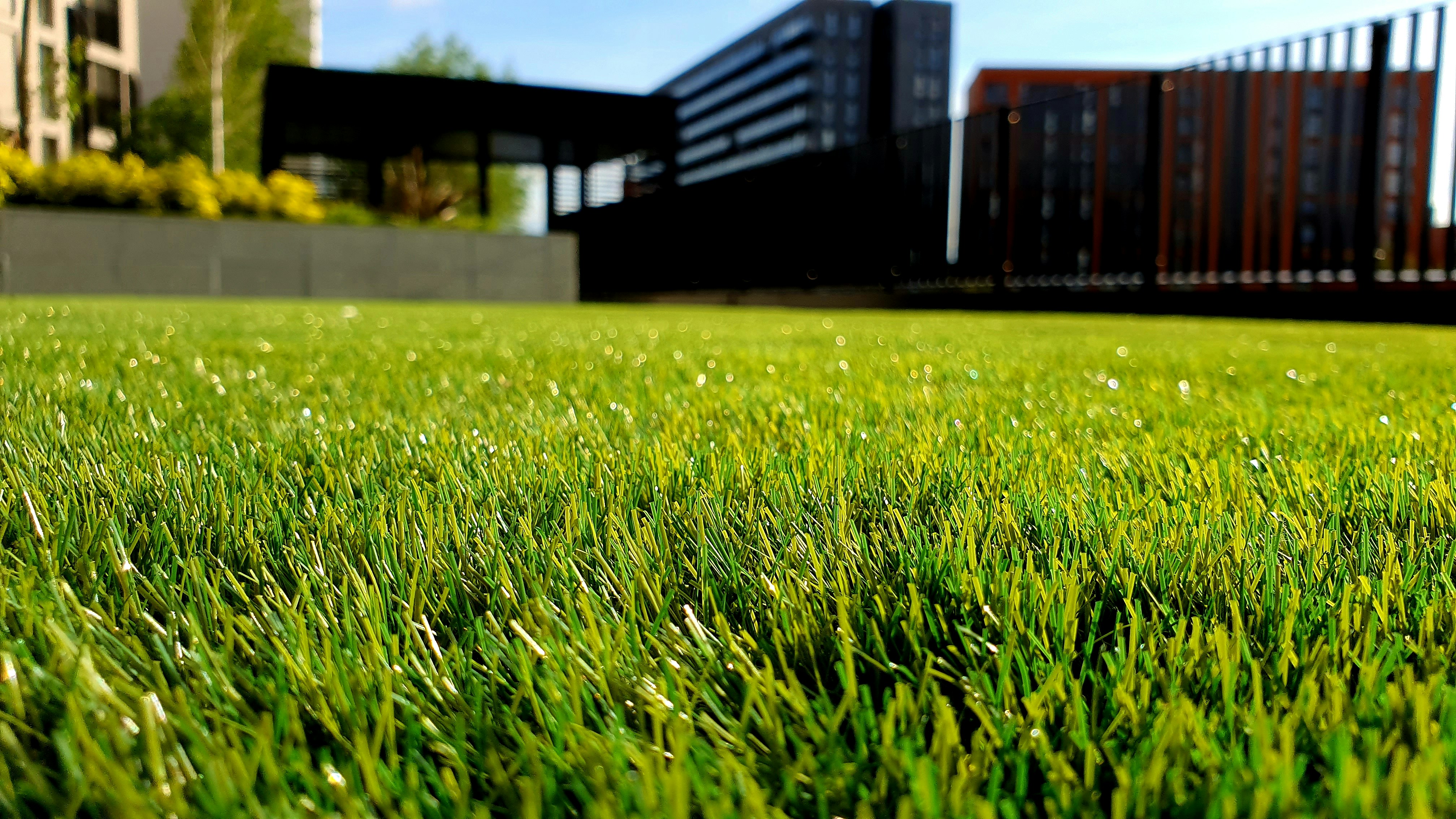Mowing
Mowing
Mowing
Mowing
5 Essential Lawn Mowing Tips for a Perfect Cut
Mowing might seem simple, but there's an art to it! Learn how to set the right height, alternate your pattern, and maintain your mower for a lawn that looks professionally manicured.
5 Essential Lawn Mowing Tips for a Perfect Cut
Mowing might seem simple, but there's an art to it! Learn how to set the right height, alternate your pattern, and maintain your mower for a lawn that looks professionally manicured.
5 Essential Lawn Mowing Tips for a Perfect Cut
Mowing might seem simple, but there's an art to it! Learn how to set the right height, alternate your pattern, and maintain your mower for a lawn that looks professionally manicured.
5 Essential Lawn Mowing Tips for a Perfect Cut
Mowing might seem simple, but there's an art to it! Learn how to set the right height, alternate your pattern, and maintain your mower for a lawn that looks professionally manicured.

Written by
Megan Carter

Written by
Megan Carter

Written by
Megan Carter

Written by
Megan Carter




Mowing seems simple, but there's an art to getting that professional, lush look for your lawn. By following a few essential tips, you can transform your mowing routine to promote healthier grass and achieve the lawn of your dreams.
Don't Scalp Your Grass!
Think of your grass blades like solar panels – the longer they are, the more energy they can capture. When you cut too short, you weaken the root system and leave your lawn vulnerable to weeds and disease. Most cool-season grasses thrive when kept between 2.5-4 inches tall, while warm-season grasses may tolerate slightly shorter heights. A good rule of thumb is to always err on the side of leaving it a bit longer.
A Clean Cut is a Happy Cut
A dull mower blade shreds the grass tips rather than slicing them cleanly. These ragged edges make your lawn more susceptible to pests, disease, and browning. Aim to sharpen your mower blades 2-3 times per season, or more frequently with heavy use. You can do this yourself with the right tools or take the blades to a lawn equipment shop for professional sharpening.
Don't Get Stuck in a Rut
If you mow in the same direction every time, your grass will start to lean permanently in that pattern, and you'll create unsightly tracks. By alternating your mowing direction each week (horizontal, vertical, diagonal), you encourage upright growth and a more even appearance.
Never Take Too Much Off the Top
Removing more than one-third of the grass blade at a time shocks your lawn, causing stress and inhibiting growth. During active growth seasons, this might mean mowing more frequently to stay within the 1/3 guideline. The payoff is a thicker, greener, more resilient lawn.
Mulch or Bag?
Short grass clippings left on the lawn act as a natural fertilizer, returning nutrients to the soil. However, if your grass is excessively long or if you have a weed problem, it's best to bag the clippings to prevent spreading weed seeds.
Conclusion
Mowing might seem like a basic chore, but by implementing these simple strategies, you'll be well on your way to a professional-looking lawn that's the envy of the neighborhood. Remember, a healthy lawn starts with healthy practices. By setting the right height, keeping your blades sharp, changing up your mowing pattern, respecting the 1/3 rule, and managing your clippings wisely, you'll create a lush, green space you can enjoy all season long. For more tips on achieving your dream lawn, be sure to check out our other blog posts!
Mowing seems simple, but there's an art to getting that professional, lush look for your lawn. By following a few essential tips, you can transform your mowing routine to promote healthier grass and achieve the lawn of your dreams.
Don't Scalp Your Grass!
Think of your grass blades like solar panels – the longer they are, the more energy they can capture. When you cut too short, you weaken the root system and leave your lawn vulnerable to weeds and disease. Most cool-season grasses thrive when kept between 2.5-4 inches tall, while warm-season grasses may tolerate slightly shorter heights. A good rule of thumb is to always err on the side of leaving it a bit longer.
A Clean Cut is a Happy Cut
A dull mower blade shreds the grass tips rather than slicing them cleanly. These ragged edges make your lawn more susceptible to pests, disease, and browning. Aim to sharpen your mower blades 2-3 times per season, or more frequently with heavy use. You can do this yourself with the right tools or take the blades to a lawn equipment shop for professional sharpening.
Don't Get Stuck in a Rut
If you mow in the same direction every time, your grass will start to lean permanently in that pattern, and you'll create unsightly tracks. By alternating your mowing direction each week (horizontal, vertical, diagonal), you encourage upright growth and a more even appearance.
Never Take Too Much Off the Top
Removing more than one-third of the grass blade at a time shocks your lawn, causing stress and inhibiting growth. During active growth seasons, this might mean mowing more frequently to stay within the 1/3 guideline. The payoff is a thicker, greener, more resilient lawn.
Mulch or Bag?
Short grass clippings left on the lawn act as a natural fertilizer, returning nutrients to the soil. However, if your grass is excessively long or if you have a weed problem, it's best to bag the clippings to prevent spreading weed seeds.
Conclusion
Mowing might seem like a basic chore, but by implementing these simple strategies, you'll be well on your way to a professional-looking lawn that's the envy of the neighborhood. Remember, a healthy lawn starts with healthy practices. By setting the right height, keeping your blades sharp, changing up your mowing pattern, respecting the 1/3 rule, and managing your clippings wisely, you'll create a lush, green space you can enjoy all season long. For more tips on achieving your dream lawn, be sure to check out our other blog posts!
Mowing seems simple, but there's an art to getting that professional, lush look for your lawn. By following a few essential tips, you can transform your mowing routine to promote healthier grass and achieve the lawn of your dreams.
Don't Scalp Your Grass!
Think of your grass blades like solar panels – the longer they are, the more energy they can capture. When you cut too short, you weaken the root system and leave your lawn vulnerable to weeds and disease. Most cool-season grasses thrive when kept between 2.5-4 inches tall, while warm-season grasses may tolerate slightly shorter heights. A good rule of thumb is to always err on the side of leaving it a bit longer.
A Clean Cut is a Happy Cut
A dull mower blade shreds the grass tips rather than slicing them cleanly. These ragged edges make your lawn more susceptible to pests, disease, and browning. Aim to sharpen your mower blades 2-3 times per season, or more frequently with heavy use. You can do this yourself with the right tools or take the blades to a lawn equipment shop for professional sharpening.
Don't Get Stuck in a Rut
If you mow in the same direction every time, your grass will start to lean permanently in that pattern, and you'll create unsightly tracks. By alternating your mowing direction each week (horizontal, vertical, diagonal), you encourage upright growth and a more even appearance.
Never Take Too Much Off the Top
Removing more than one-third of the grass blade at a time shocks your lawn, causing stress and inhibiting growth. During active growth seasons, this might mean mowing more frequently to stay within the 1/3 guideline. The payoff is a thicker, greener, more resilient lawn.
Mulch or Bag?
Short grass clippings left on the lawn act as a natural fertilizer, returning nutrients to the soil. However, if your grass is excessively long or if you have a weed problem, it's best to bag the clippings to prevent spreading weed seeds.
Conclusion
Mowing might seem like a basic chore, but by implementing these simple strategies, you'll be well on your way to a professional-looking lawn that's the envy of the neighborhood. Remember, a healthy lawn starts with healthy practices. By setting the right height, keeping your blades sharp, changing up your mowing pattern, respecting the 1/3 rule, and managing your clippings wisely, you'll create a lush, green space you can enjoy all season long. For more tips on achieving your dream lawn, be sure to check out our other blog posts!
Mowing seems simple, but there's an art to getting that professional, lush look for your lawn. By following a few essential tips, you can transform your mowing routine to promote healthier grass and achieve the lawn of your dreams.
Don't Scalp Your Grass!
Think of your grass blades like solar panels – the longer they are, the more energy they can capture. When you cut too short, you weaken the root system and leave your lawn vulnerable to weeds and disease. Most cool-season grasses thrive when kept between 2.5-4 inches tall, while warm-season grasses may tolerate slightly shorter heights. A good rule of thumb is to always err on the side of leaving it a bit longer.
A Clean Cut is a Happy Cut
A dull mower blade shreds the grass tips rather than slicing them cleanly. These ragged edges make your lawn more susceptible to pests, disease, and browning. Aim to sharpen your mower blades 2-3 times per season, or more frequently with heavy use. You can do this yourself with the right tools or take the blades to a lawn equipment shop for professional sharpening.
Don't Get Stuck in a Rut
If you mow in the same direction every time, your grass will start to lean permanently in that pattern, and you'll create unsightly tracks. By alternating your mowing direction each week (horizontal, vertical, diagonal), you encourage upright growth and a more even appearance.
Never Take Too Much Off the Top
Removing more than one-third of the grass blade at a time shocks your lawn, causing stress and inhibiting growth. During active growth seasons, this might mean mowing more frequently to stay within the 1/3 guideline. The payoff is a thicker, greener, more resilient lawn.
Mulch or Bag?
Short grass clippings left on the lawn act as a natural fertilizer, returning nutrients to the soil. However, if your grass is excessively long or if you have a weed problem, it's best to bag the clippings to prevent spreading weed seeds.
Conclusion
Mowing might seem like a basic chore, but by implementing these simple strategies, you'll be well on your way to a professional-looking lawn that's the envy of the neighborhood. Remember, a healthy lawn starts with healthy practices. By setting the right height, keeping your blades sharp, changing up your mowing pattern, respecting the 1/3 rule, and managing your clippings wisely, you'll create a lush, green space you can enjoy all season long. For more tips on achieving your dream lawn, be sure to check out our other blog posts!
Blog
The Lush Lawn Blog
Learn about lawn care basics, seasonal tips, pest control, troubleshooting, and more.
Contact Us
Get Your Free Lawn Care Quote
Curious about how we can help, or have specific lawn concerns? Drop us a line, and we'll get back to you within 24 hours.

